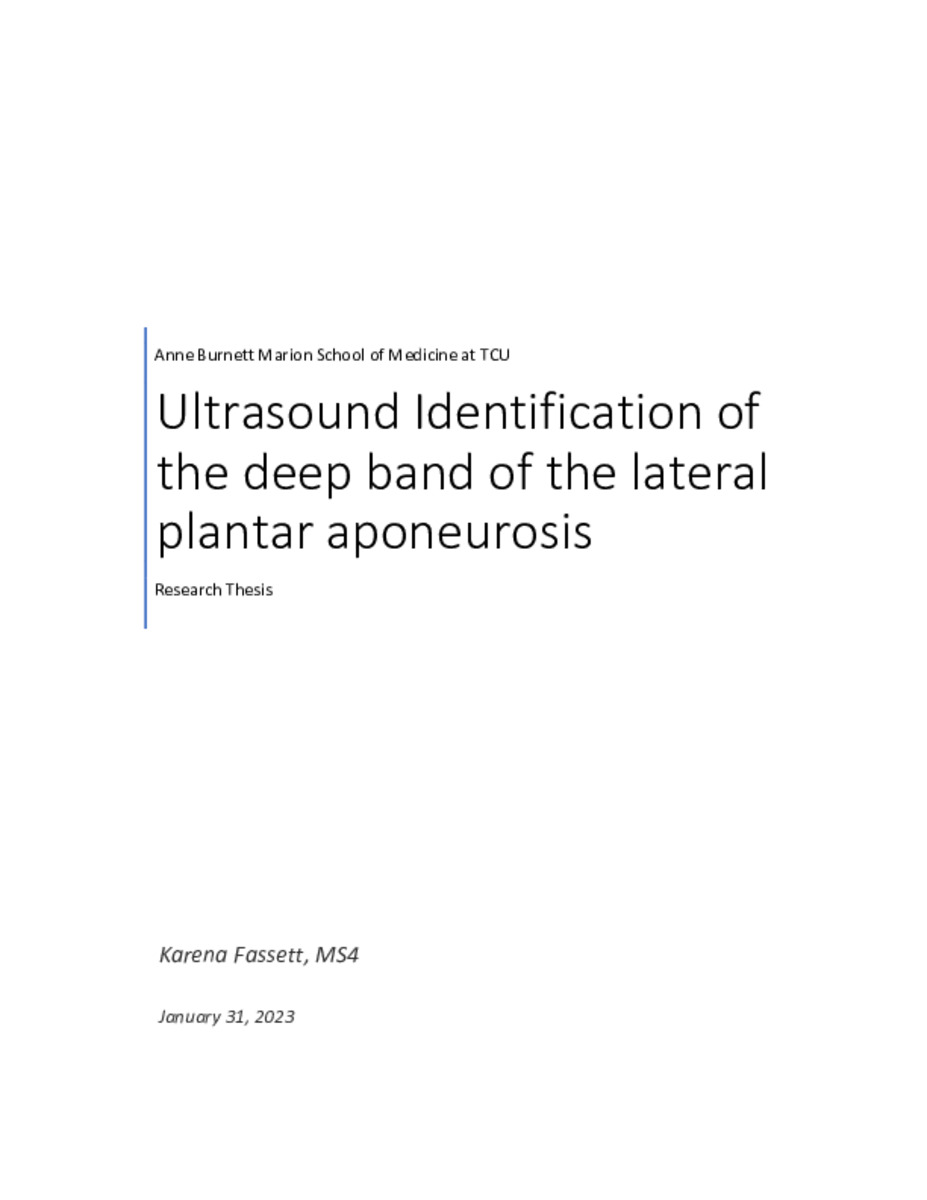Ultrasound Identification of the deep band of the lateral plantar aponeurosisShow full item record
| Title | Ultrasound Identification of the deep band of the lateral plantar aponeurosis |
|---|---|
| Author | Fassett, Karena |
| Date | 5/1/2023 |
| Abstract | Research Question: In a convenience sample of cadaveric feet, can ultrasonography (US) provide accurate identification of the deep band of the lateral plantar aponeurosis as confirmed by direct anatomic evidence of the structure? Background, Significance, and Rationale: While anatomy textbooks generally portray the human body fairly consistently, in reality there are numerous anatomical variations of those portrayals. These variations may or may not be clinically relevant. In 2018, Drs. Cara Fisher and Cameron Beck described in detail, for the first time, an anatomical variation of the plantar aponeurosis (PA). This variation, a fascial band that dives deep into the foot instead of staying superficial, crosses over a branch of the lateral plantar nerve which could lead to compression of the nerve. In future studies, we hope to investigate the potential clinical significance of this variation. In this research project, our goal is to determine if the fascial band can be identified noninvasively using US. Materials and Methods: Under the direction of my SPT mentor, Dr. Fisher, I assisted in testing 15 pairs of fresh-frozen cadaveric feet (n = 30) for the presence of the deep band of the lateral PA. We assessed the feet using US. If the fascial band variation appeared to be present, we used US to guide an injection of a small bead of latex at that site. We then dissected the foot to the latex to verify its presence. Our findings were recorded at the end of each dissection. Results and Conclusions: In a sample of 30 feet, the prevalence of the deep band of the lateral PA was 36.7%. Our results suggest that US is not a reliable screening tool to detect the deep band of the lateral PA with a sensitivity of only 36.4% and a specificity of 73.7%. The positive predictive value (PPV) was 44.4%, which is only 7.7% higher than the prevalence of the band in our sample of feet. Despite these negative results, we believe a repeat study that addresses certain limitations would be needed to confidently conclude that US cannot detect the deep band of the lateral PA in cadaveric feet. |
| Link | https://repository.tcu.edu/handle/116099117/63577 |
| Department | Burnett School of Medicine |
| Advisor | Fisher, Cara |
Files in this item
This item appears in the following Collection(s)
© TCU Library 2015 | Contact Special Collections |
HTML Sitemap




